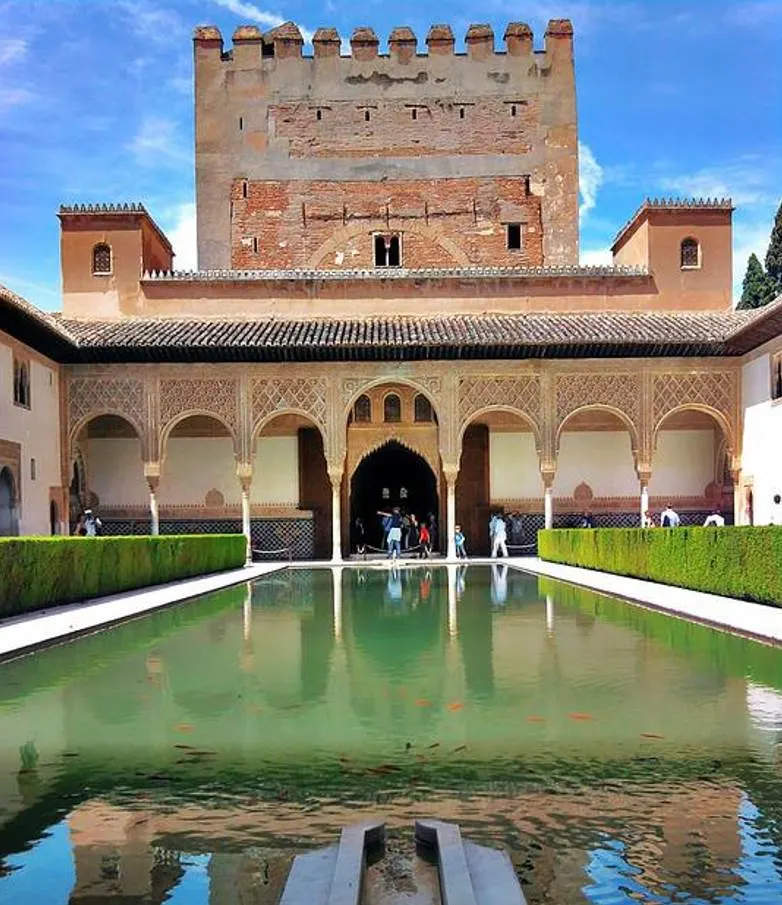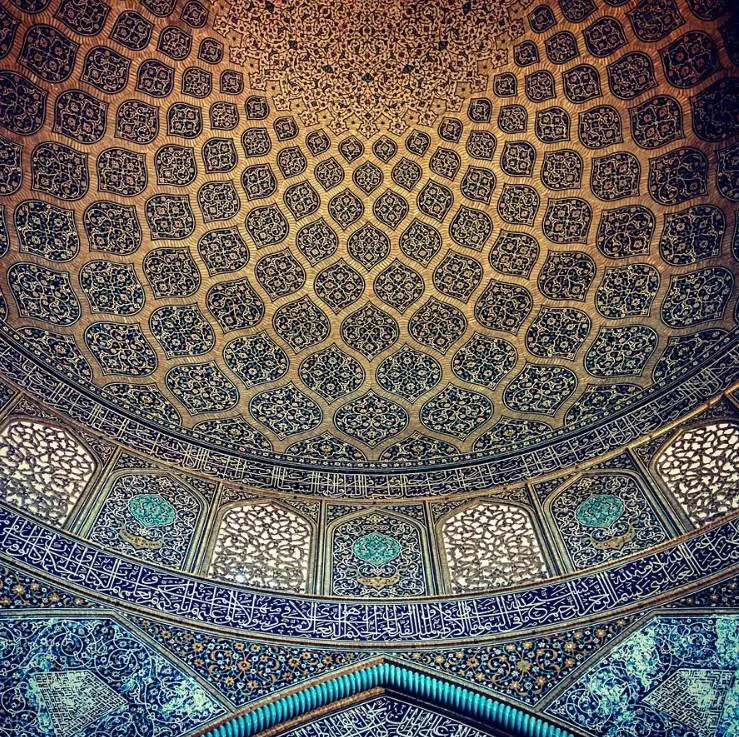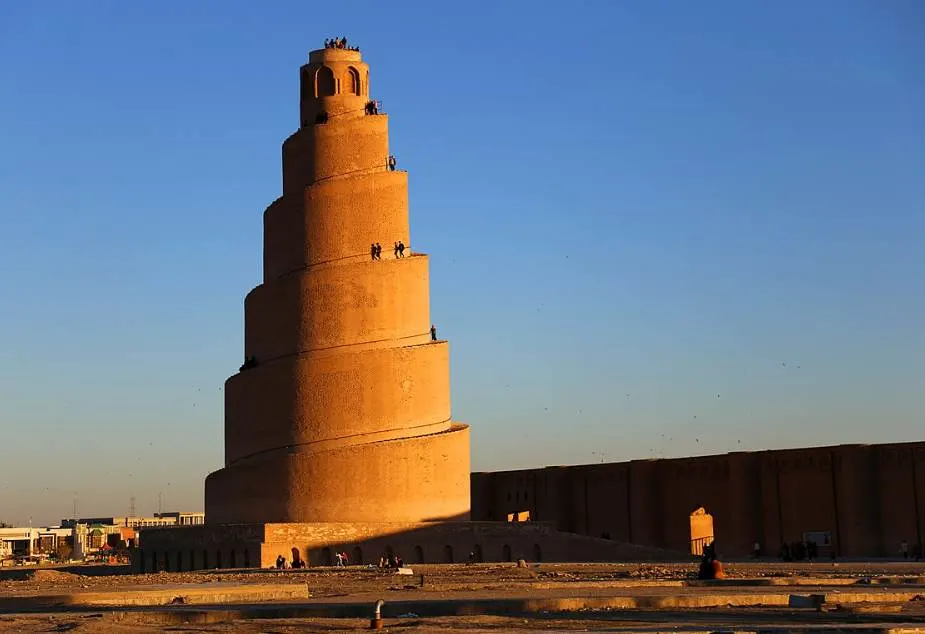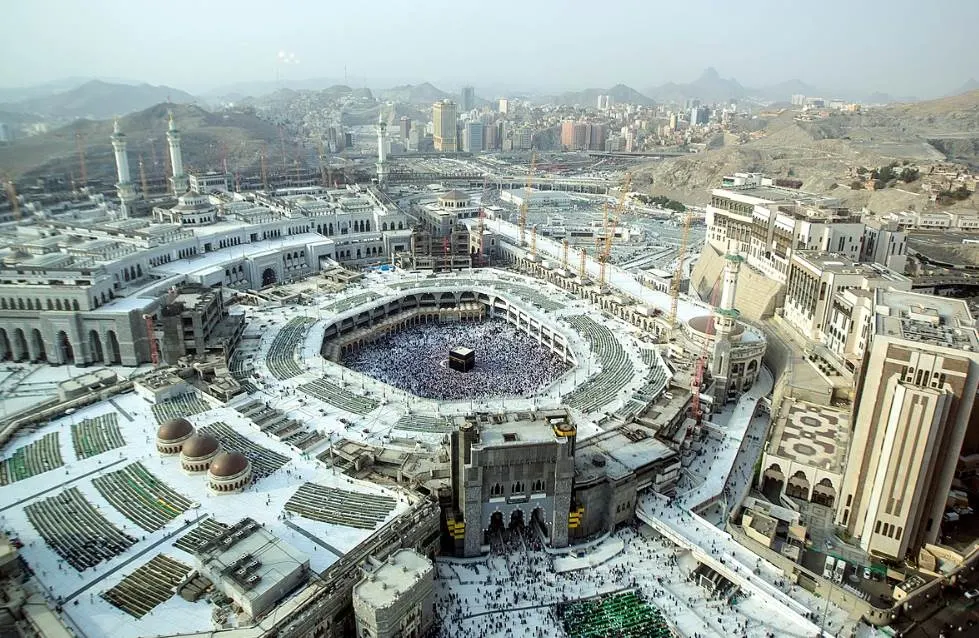Islamic architecture emerged shortly after the foundation of Islam in the 7th century. It encompasses a wide variety of styles and is used in locations all around the world.
It started out as an extremely eclectic architectural style that incorporated influences from Roman, Persian, Mesopotamian, and Byzantine architecture.
The Muslim Conquests in the 7th and 8th centuries spread Islamic architecture to both the west and east so local architectural styles played a role in its development in these parts of the world.
The most notable Islamic buildings that have been constructed up until now are mosques, madrasas (educational facilities), tombs, palaces, and forts.
One of the significant differences in terms of decorations compared to Christian architecture is the absence of idols. Therefore, many buildings are decorated with Arabic calligraphy featuring poems or verses from the Quran.
Without further ado, let’s check out some of the most famous Islamic buildings ever constructed.
1. Dome of the Rock
Dome of the Rock is one of the most iconic Islamic buildings in the world. Its amazing dome stands out because it was constructed on top of Temple Mount in the Old City of Jerusalem. This site is referred to by Muslims as “Al-Aqsa Compound” and is situated just south of the Muslim Quarter of the city.
The first structure in this location dates back to the early days of Islam in the late 7th century. This was the location of the Second Jewish Temple so it was quite significant for Muslims. What’s remarkable is that the core structure still stands today, making it the oldest surviving example of Islamic architecture in the world.

2. Alhambra
The Alhambra is an immense palace complex in Granada, a city in the Andalusia region in southern Spain. The construction started in the year 1238 by Muhammad I Ibn al-Ahmar, the founder of the Emirate of Granada. These buildings in Granada were vastly expanded in the following centuries.

Many of the buildings of the Alhambra date back to the 14th century and reflect the typical Morrish architecture in this part of Europe at the time. These additions were made during the reigns of Yusuf I and Muhammad V. Several additions were made following the Christian Reconquista in 1492 as well such as the Palace of Charles V.

3. Taj Mahal
The Taj Mahal is one of the most spectacular examples of Islamic Mughal architecture in the world. It was commissioned in the 17th century by Mughal emperor Shah Jahan (1592-1666) to serve as the mausoleum of his favorite wife Mumtaz Mahal (1593-1631) who passed away at the age of 38.
It’s estimated that the emperor spent the equivalent of $1 billion on this project and this is reflected in the incredible domed building that is heavily decorated with Islamic calligraphy. It’s a UNESCO World Heritage site and one of the new 7 wonders of the World.

4. Sheikh Lotfollah Mosque
Sheikh Lotfollah Mosque is one of the most famous Islamic buildings in Iran. It’s located in the wonderful city of Isfahan in the central part of the country. Its distinctive dome dominates the eastern part of an amazing public space called Naqsh-i Jahan Square.
The mosque was constructed between 1603 and 1619 during the reign of Shah Abbas I of Persia (1571-1629). The structure underwent a complete renovation in the 1920s which returned it to its former glory. The building itself is relatively simple but it features some of the most stunning interior and exterior Islamic decorations in the world.

5. Topkapi Palace
Topkapi Palace is an incredible complex of buildings in Istanbul that is located in the eastern part of the Fatih district. This is the historical heart of the city and the location the ancient city of Constantinople. The conquest of the capital of the Eastern Roman Empire happened in 1453 and Sultan Mehmed the Conqueror commissioned its construction just 6 years later in 1459.
The complex features a large number of structures, many of which were constructed several centuries later. The Ottoman Imperial Harem, Imperial Hall, and Imperial Council are just a few of the great examples of Islamic architecture that can be found inside this popular tourist attraction in Turkey’s most populous city.

6. Blue Mosque
The Blue Mosque is the common name of an Islamic building that is officially known as the “Sultan Ahmed Mosque.” It’s also located in the Fatih district of the city, not too far southwest of Topkapi Palace and the Hagia Sophia. This immense building was completed between 1609 and 1616 and was named after the man who commissioned it.
The nickname of the building is a reference to the blue hue reflected from the hand-painted blue tiles that decorate the incredible interior space of this mosque. It’s a remarkable feat of Islamic architecture because it features 5 main domes, 8 secondary domes, and 6 minarets, a combination that isn’t found anywhere else in the world.

7. Tomb of Jahangir
The Tomb of Jahangir is a famous mausoleum that was constructed for the Mughal Emperor Jahangir (1569-1627). It’s located in Shahdara Bagh, not too far from Lahore, the capital city of the Punjab region in Pakistan. It was completed in 1637, about a decade after the emperor passed away.
This remarkable structure isn’t the only important monument that was constructed here. It’s part of a UNESCO World Heritage site that also includes the nearby Akbari Sarai and the Tomb of Asif Khan. Jahangir’s tomb is world-famous for its incredible interior decorations in the form of Mughal-era frescoes.

8. Mosque-Cathedral of Córdoba
The Mosque-Cathedral of Córdoba is an important Islamic building in the Spanish city of Córdoba in southern Spain. It’s sometimes referred to as the Mezquita or the “Great Mosque of Córdoba” but it was transformed into a Catholic church following the reconquest of Andalusia by the Christians.
The original version of the building was commissioned by the Muslim ruler Abd ar-Rahman I in the year 785. It was expanded several times in the following centuries and a minaret was added to the mosque in the year 985. Several parts of the mosque were remodeled in the Renaissance architectural style in the 16th century, including the minaret that was transformed into a bell tower.

9. Great Mosque of Samarra
The Great Mosque of Samarra is one of the best-recognizable Islamic buildings in the world. That’s not because of the incredible architectural design of the building in the Iraqi city of Samarra itself but because of the spiraling minaret with a ramp that stands right next to it.
This minaret reaches a height of 52 meters (171 feet) and visitors can reach the top of this structure via the spiraling ramp that is attached to it. The entire complex was completed between 848 and 851 and it was the largest mosque in the world at the time.

10. Great Mosque of Mecca
The Great Mosque of Mecca is officially known as “Masjid al-Haram” and is located in the city of Mecca in the Mecca Province of Saudi Arabia. This mosque was constructed around the Kabaa, a building that is considered to be the most sacred place in Islam as it’s referred to as “The House of God.”
This mosque is world-famous because it’s here that all Muslims must do a pilgrimage at least once in their life. This is why the central courtyard tends to be extremely crowded due to the worshippers circling the Kabaa. The entire complex covers an area of 356,000 square meters (88 acres) which makes it the largest mosque in the world.

